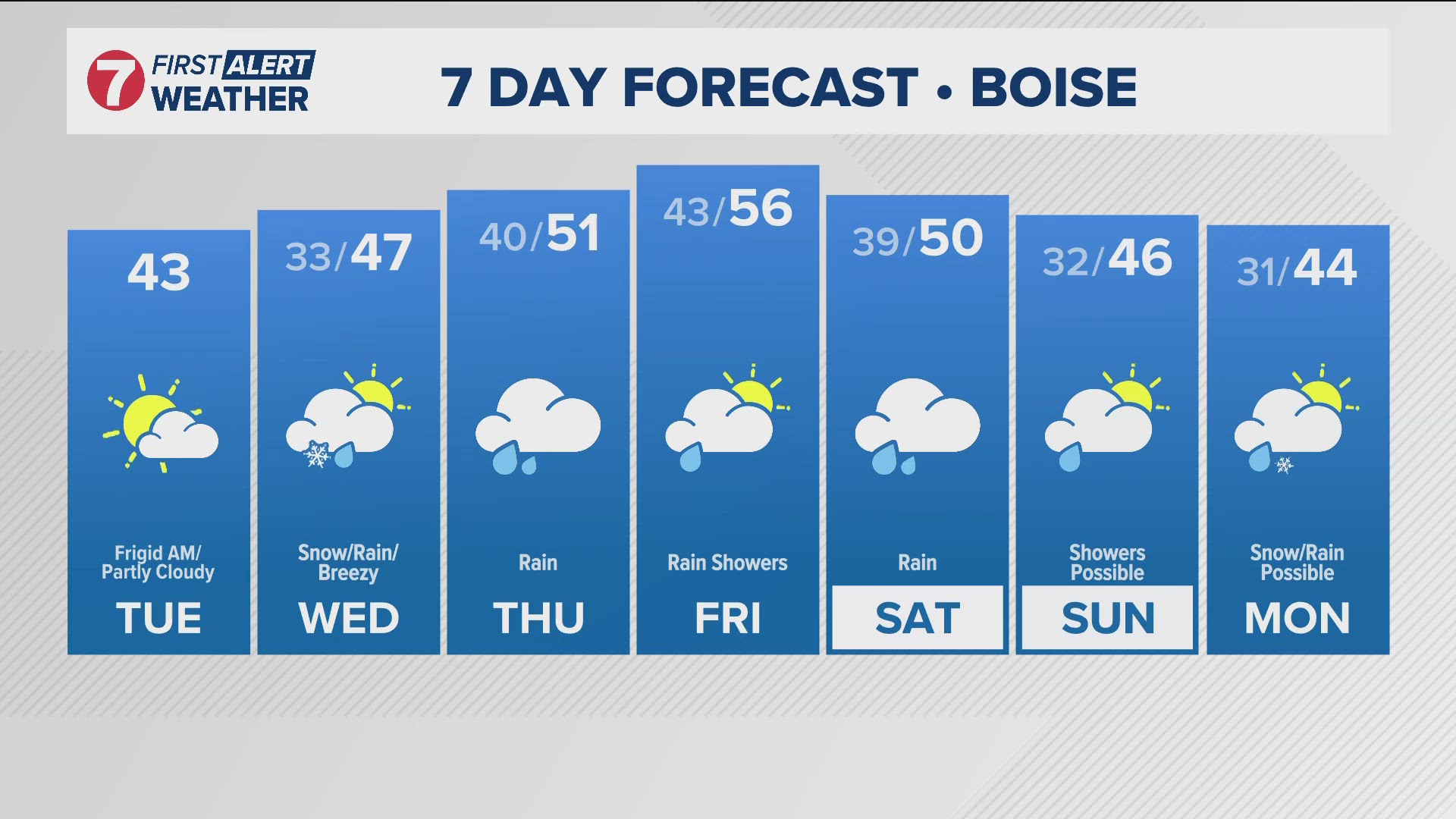BOISE, Idaho — April showers -- and snowfall -- combined with cooler-than-average temperatures have helped Idaho's water supply over the past month, but it's going to take a lot more to get the southern part of the state out of drought, hydrologists and water operations managers said during Thursday morning's Idaho Water Supply Committee meeting.
On April 29, Gov. Brad Little approved an emergency drought declaration for 34 counties in central and southern Idaho -- the entirety of the state south of the Salmon River.
Under Idaho law, that declaration allows irrigators to make emergency water rights transfers. It also clears the way for federal assistance.
Idaho Department of Water Resources hydrologist David Hoekema said that declaration was based on drought monitoring data from late April, and in anticipation of what's to come, following 2021's severe drought that left Idaho reservoirs with little carryover for this year.
The governor and IDWR director "wanted to get out ahead and make that tool available to irrigators, as we're going to see shortages probably across most of southern Idaho," Hoekema said.
The latest drought monitor map, posted May 10, indicates more than 89 percent of Idaho is abnormally dry and 49.8 percent of the state is in severe to extreme drought.
One thing that's helped since the committee's previous meeting, on April 15, has been below-average temperatures and above-average precipitation, especially new snow in the mountains.
Danny Tappa with the USDA's Natural Resources Conservation Service monitors snowpack. He said the NRCS has seen improvements in snow-water equivalent for early May, "but we've largely missed peak snowpack across the entire state."
A significant amount of snowmelt typically happens in April, but this year, "we didn't really see it," Tappa said, adding that snowpack "more or less plateaued" during April, a time when it has often declined in past years.
Snowpack for basins around southern Idaho remains below normal for the water year, but Tappa called the improvements from April 1 to May 1 "really impressive, quite honestly."
Mountain snow since April 1 has added 5 to 10 inches of snow-water content in the Central Mountains, 4 to 8 inches in the Upper Snake basin, and 2 to 5 inches in the Big Wood and Big Lost basins.
For the Boise Basin, Tappa said, snowpack started above normal in November and December, stayed about the same later in the winter before starting to melt in late March, now, following April's storms, it's more or less where we were in early January... volume missing for total snowpack is quite significant."
The Bureau of Reclamation is releasing water from the Anderson Ranch and Arrowrock reservoirs into Lucky Peak to start delivering irrigation water. Cold weather has helped curb irrigation demand on the Boise River system, said Ryan Hedrick, water operations lead for the Bureau of Reclamation's Middle Snake region. Hedrick said spring rain added 130,000 to 180,000 acre-feet of water into the system. Still, the Boise reservoir system was at 65 percent of capacity as of Thursday.
Water forecasts for May through July show likely significant shortages in south-central Idaho, Tappa said, based on water-supply forecast values and water stored in reservoirs. Storage as of May 1 was poor relative to the last several years, Tappa said.
The Northwest River Forecast Center reports the outlook for water-supply volume from April through September has not changed dramatically, but the timing of the runoff has changed due to "unusually cold temperatures" over the past month.
"It would take a substantial amount of precipitation to recover from the snowpack deficit that we have," said Geoffrey Walters of the NWRFC, who noted that the state of Idaho's water supply is largely driven by snowpack.
Peak runoff was expected to happen in May, but because of cooler weather, Walters said, water-supply forecasts say there will be near-normal water supply volume in June.
After Sunday, when 80-degree temperatures are forecast for southern Idaho's lower valleys, cooler conditions with possible valley rain and mountain snow showers are expected to return.
"We might continue to see these cool temperatures for a while yet," said Troy Lindquist with the National Weather Service, who also said the cooler weather will preserve the snowpack and delay a significant amount of runoff until late May or early June.
However, while the short-term outlook favors below-normal temperatures and above-normal precipitation, Lindquist said the outlook for summer favors above-normal temperatures and below-normal precipitation.
"I don't know that we're going to see any drought relief over the summertime. We'll have to see," Lindquist said.
Recreation on Lucky Peak Reservoir will be affected this summer, with some boat ramp closures, which the U.S. Army Corps of Engineers announced in late April. Jon Roberts, water management program manager for the Corps of Engineers, on Thursday said those closures will remain in place.
Roberts said the target level for Lucky Peak Reservoir this summer is 20 feet short of full. For the areas that will be open this summer, he said, the recreation season could possibly be extended well into September, but that's highly dependent on weather conditions and how fast irrigators need to use water in the Boise River system.
In the Payette basin, Lake Cascade is now projected to fill and Deadwood Reservoir is "on the brink" of filling this year, Hedrick with the Bureau of Reclamation said.
In the Hells Canyon area, all boat ramps are in the water, ready for Memorial Day weekend and the summer recreation season, said John Hildreth with Idaho Power. Hildreth also said this year's signs of drought developed a couple months earlier than in 2021, giving water managers more time to mitigate potential impacts.
Watch more Local News:
See the latest news from around the Treasure Valley and the Gem State in our YouTube playlist:



